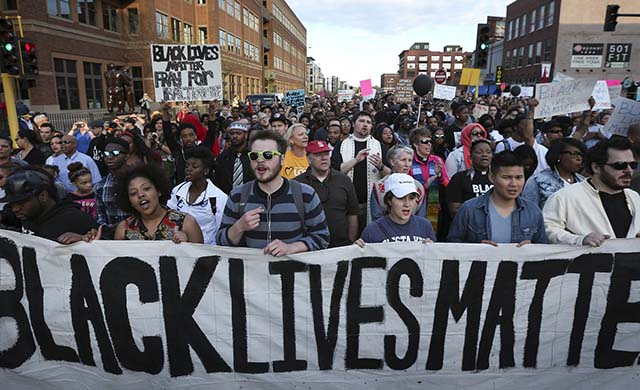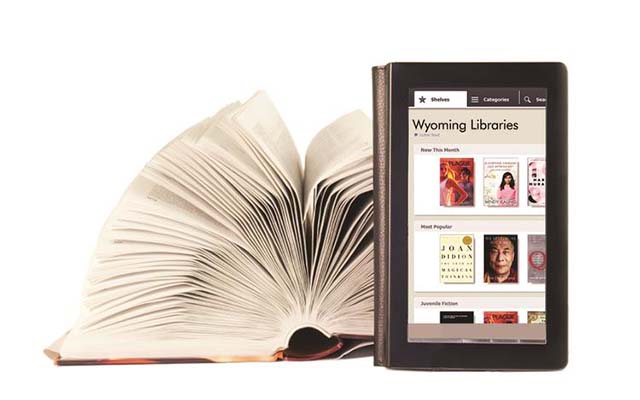What does ‘Black Lives Matter’ want?

Robin D. G. Kelley Correspondent
On August 1, the Movement for Black Lives (M4BL), a coalition of over 60 organisations, rolled out “A Vision for Black Lives: Policy Demands for Black Power, Freedom & Justice”, an ambitious document described by the Press as the first signs of what young black activists “really want”.
It lays out six demands aimed at ending all forms of violence and injustice endured by black people; redirecting resources from prisons and the military to education, health, and safety; creating a just, democratically controlled economy; and securing black political power within a genuinely inclusive democracy. Backing the demands are 40 separate proposals and 34 policy briefs, replete with data, context, and legislative recommendations.
But the document quickly came under attack for its statement on Palestine, which calls Israel an apartheid state and characterises the ongoing war in Gaza and the West Bank as genocide. Dozens of publications and media outlets devoted extensive coverage to the controversy around this single aspect of the platform, including The Guardian, the Washington Post, The Times of Israel, Haaretz, and the St. Louis Post-Dispatch.
Of course, M4BL is not the first to argue that Israeli policies meet the UN definitions of apartheid. (The 1965 International Convention for the Elimination of All Forms of Racial Discrimination and the 1975 International Convention on the Suppression and Punishment of the Crime of Apartheid define it as “inhuman acts committed for the purpose of establishing and maintaining domination by one racial group of persons over any other racial group of persons and systematically oppressing them”.).
Nor is M4BL the first group to use the term “genocide” to describe the plight of Palestinians under occupation and settlement.
The renowned Israeli historian Ilan Pappe, for example, wrote of the war on Gaza in 2014 as “incremental genocide”. That Israel’s actions in Gaza correspond with the UN definition of genocide to “destroy, in whole or in part, a national, ethnical, racial or religious group” by causing “serious bodily or mental harm” to group members is a legitimate argument to make.
The few mainstream reporters and pundits who considered the full M4BL document either reduced it to a laundry list of demands or positioned it as an alternative to the platform of the Democratic Party — or else focused on their own benighted astonishment that the movement has an agenda beyond curbing police violence.
But anyone following Black Lives Matter from its inception in the “killingtrayvonsaftermath” of the George Zimmerman verdict should not be surprised by the document’s broad scope. Black Lives Matter founders Alicia Garza, Patrisse Cullors and Opal Tometi are veteran organisers with a distinguished record of fighting for economic justice, immigrant rights, gender equity and ending mass incarceration.
“A Vision for Black Lives” was not a response to the US presidential election, nor to unfounded criticisms of the movement as “rudderless” or merely a hashtag. It was the product of a year of collective discussion, research, collaboration and intense debate, beginning with the Movement for Black Lives Convening in Cleveland last July, which initially brought together 30 different organisations.
It was the product of some of the country’s greatest minds representing organisations such as the Black Youth Project 100, Million Hoodies, Black Alliance for Just Immigration, Dream Defenders, the Organisation for Black Struggle, and Southerners on New Ground (SONG).
As Marbre Stahly-Butts, a leader of the M4BL policy table explained: “We formed working groups, facilitated multiple convenings, drew on a range of expertise, and sought guidance from grassroots organisations, organisers and elders. As of today, well over 60 organisations and hundreds of people have contributed to the platform.”
The result is actually more than a platform. It is a remarkable blueprint for social transformation that ought to be read and discussed by everyone. The demands are not intended as Band-Aids to patch up the existing system but achievable goals that will produce deep structural changes and improve the lives of all Americans and much of the world.
Thenjiwe McHarris, an eminent human rights activist and a principle coordinator of the M4BL policy table, put it best: “We hope that what has been created carries forward the legacy of our elders and our ancestors while imagining a world and a country profoundly different than what currently exists. For us and for those that will come after us.”
The document was not drafted with the expectation that it will become the basis of a mass movement, or that it will replace the Democratic Party’s platform. Rather it is a vision statement for long-term, transformative organising. Indeed, “A Vision for Black Lives” is less a political platform than a plan for ending structural racism, saving the planet, and transforming the entire nation — not just black lives.
If heeded, the call to “end the war on Black people” would not only reduce our vulnerability to poverty, prison and premature death but also generate what I would call a peace dividend of billions of dollars.
“A Vision for Black Lives” explicitly calls for divesting from prisons, policing, a failed war on drugs, fossil fuels, fiscal and trade policies that benefit the rich and deepen inequality, and a military budget in which two-thirds of the Pentagon’s spending goes to private contractors. The savings are to be invested in education, universal healthcare, housing, living wage jobs, “community-based drug and mental health treatment”, restorative justice, food justice and green energy.
But the point is not simply to reinvest the peace dividend into existing social and economic structures.
It is to change those structures — which is why “A Vision for Black Lives” emphasises community control, self-determination, and “collective ownership” of certain economic institutions.
It calls for community control over police and schools, participatory budgeting, the right to organise, financial and institutional support for cooperatives, and “fair development” policies based on human needs and community participation rather than market principles.
“A Vision for Black Lives” advocates not only closing tax loopholes for the rich but revising a regressive tax policy in which the poorest 20 percent of the population pays on average twice as much in taxes as the richest 1 percent. M4BL supports a massive jobs programme for black workers, but the organisation’s proposal includes a living wage, protection and support for unions and worker centres, and anti-discrimination clauses that protect queer and trans employees, the disabled, and the formerly incarcerated.
Unlike the Democratic Party, M4BL does not subscribe to the breadwinner model of jobs as the sole source of income. It instead supports a universal basic income (UBI) that “would meet basic human needs”, eliminate poverty, and ensure “economic security for all”.
This is not a new idea; some kind of guaranteed annual income has been fundamental to other industrialising nations with strong social safety nets and vibrant economies, and the National Welfare Rights Organisation proposed similar legislation nearly a half century ago. – counterpunch.org
Read the full article on www.herald.co.zw
Thomas Paine argued in the 18th century for the right of citizens to draw a basic income from the levying of property tax, as Elizabeth Anderson recently reminded. Ironically, the idea of a basic income or “negative income tax” also won support from neoliberal economists Milton Friedman and Friedrich Hayek — although for very different reasons.
Because eligibility does not require means testing, a UBI would effectively reduce the size of government by eliminating the bureaucratic machine of social workers and investigators who police the dispensation of entitlements such as food stamps and welfare. And by divesting from an unwieldy and unjust prison-industrial complex, there would be more than enough revenue to create good-paying jobs and provide a basic income for all.
Reducing the military is not just about resources; it is about ending war, at home and abroad. “A Vision for Black Lives” includes a devastating critique of US foreign policy, including the escalation of the war on terror in Africa, machinations in Haiti, the recent coup in Honduras, ongoing support for Israel’s occupation of Palestine, and the role of war and free-trade policies in fueling the global refugee crisis.
M4BL’s critique of US militarism is driven by Love — not the uncritical love of flag and nation we saw exhibited at both major party conventions, but a love of global humanity. “The movement for Black lives,” one policy brief explains, “must be tied to liberation movements around the world. The Black community is a global Diaspora and our political demands must reflect this global reality. As it stands funds and resources needed to realise domestic demands are currently used for wars and violence destroying communities abroad.”
Finally, a peace dividend can fund M4BL’s most controversial demand: reparations. For M4BL, reparations would take the form of massive investment in black communities harmed by past and present policies of exploitation, theft, and disinvestment; free and open access to lifetime education and student debt forgiveness; and mandated changes in the school curriculum that acknowledge the impact of slavery, colonialism, and Jim Crow in producing wealth and racial inequality.
The latter is essential, since perhaps the greatest obstacle to reparations is the common narrative that American wealth is the product of individual hard work and initiative, while poverty results from misfortune, culture, bad behaviour or inadequate education. We have for too long had ample evidence that this is a lie. – counterpunch.org










Comments